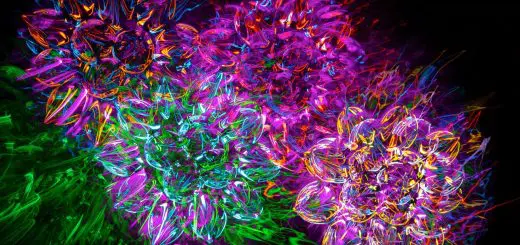Ancient Egypt: Life Along the Nile River

Looking for more amazing products? Check out our online store and explore our collection here! Happy shopping!
Before diving in, please note: This post is for informational purposes only. If you’d like to know more about how we approach topics, feel free to check out our friendly Disclaimer Page.
Hey there, amazing readers! 
We’re committed to delivering quality posts, and your support (even just sticking around despite the ads) means everything to us. So, bear with us, and thanks for helping us keep the good vibes rolling. Now, on to the fun stuff!
TRANSLATE BUTTON AT THE END OF THE ARTICLE
A Quick Overview
Ancient Egypt, a civilization that thrived for thousands of years, is often associated with grand pyramids, majestic temples, and fascinating pharaohs.
At the heart of this remarkable culture was the Nile River, a lifeline that shaped every aspect of life.
Picture this: a river that flows through an arid landscape, turning barren land into lush fields and bustling cities.
That’s the Nile for you!
In this article, I’ll take you on a journey to explore life along the Nile, highlighting its significance, the daily lives of its people, and the vibrant culture that emerged from this awe-inspiring environment.
The Nile: Egypt’s Lifeblood and a Source of Abundance
The Nile River is often referred to as the "lifeblood" of Egypt, and rightly so.
Stretching over 4,000 miles, it is one of the longest rivers in the world.
Originating from the heart of Africa, it flows northward, finally emptying into the Mediterranean Sea.
This mighty river provided essential resources such as water, food, and transportation, effectively supporting the entire civilization.
Every year, the Nile would flood its banks, creating fertile plains ideal for agriculture.
This phenomenon was not just a natural occurrence; it was a pivotal event for the people.
The waters brought rich silt that fertilized the land, allowing crops to thrive in an otherwise harsh desert environment.
The ancient Egyptians celebrated this bounty, relying on the river’s cycle to sustain their livelihoods.
Moreover, the Nile acted as a highway for trade and communication.
Boats laden with goods would glide along its waters, connecting various communities.
This facilitated not only the exchange of products but also ideas and culture.
The river was, in fact, the very thread that wove together the fabric of Egyptian society.
Fun Fact:
Did you know that the Nile is home to a variety of wildlife?
Crocodiles, hippos, and various species of fish thrived in its waters, adding even more richness to the ecosystem.
The Role of the Nile in Ancient Egyptian Society
The Nile wasn’t just a geographical feature; it was a cornerstone of social structure.
Ancient Egyptians organized their lives around the river.
Villages and cities sprang up along its banks.
People established agriculture, fishing, and trade, creating a self-sufficient economy.
Governance was also influenced by the Nile.
Pharaohs often used the river to showcase their power.
They commissioned grand projects such as canals and irrigation systems to control the water supply, proving their divine right to rule.
The Nile became an integral part of their identity, symbolizing life, fertility, and prosperity.
Religious beliefs also revolved around the river.
The ancient Egyptians worshipped various deities linked to the Nile, including Hapi, the god of the annual floods, and Osiris, associated with fertility.
They believed that the river’s cycles mirrored the cycles of life and death, reinforcing the importance of the Nile in their spiritual lives.
Interesting Tidbit:
Pharaohs would often hold rituals to appease the Nile, ensuring its floods would be bountiful.
These rituals included offerings and processions along the river’s banks.
Farming Along the Nile: Cultivating Fertile Land
Farming was the backbone of ancient Egyptian life, and the Nile made it all possible.
The river’s annual floods deposited nutrient-rich silt on the land, ideal for growing crops.
Wheat, barley, flax, and papyrus were some of the primary staples cultivated by the Egyptians.
Farmers utilized simple but effective tools—hoes made of wood, sickles for harvesting, and shadoofs, which helped lift water for irrigation.
They worked long hours under the sun, but the rewards were worth it.
A good harvest meant food security, allowing communities to thrive and trade with one another.
After the floodwaters receded, farmers hurried to plant their crops.
They understood the rhythms of the river, timing their planting and harvesting to align with the flood cycles.
This profound knowledge showcased their deep connection to the land and the river.
Quick Thought:
Imagine being a farmer in ancient Egypt!
You’d spend your days under the sun, planting and nurturing crops that would feed your family and community—what a fulfilling life!
The Nile’s Annual Flood: A Gift of Rich Soil
The annual flooding of the Nile, known as the inundation, was a spectacular event.
Each summer, rising waters would overflow the riverbanks, transforming the landscape.
While people initially feared the floods, they eventually learned to see them as a blessing.
The inundation typically lasted for several months, with the waters receding just in time for planting.
This natural cycle was so vital that the Egyptians developed a calendar based on it.
They divided their year into three seasons: Akhet (the inundation), Peret (the growing season), and Shemu (the harvesting season).
The rich black soil left behind after the floods was key to their agricultural success.
With this "kemet" soil, crops flourished, supporting a growing population.
The Nile’s inundation was more than just a yearly event; it was a celebration of life and sustenance.
Reflective Moment:
Isn’t it fascinating how something that could be seen as disruptive turned out to be life-giving?
The ancient Egyptians truly understood the value of their environment.
Daily Life in Ancient Egypt: Work and Play by the River
Life along the Nile was a blend of hard work and joyful moments.
People engaged in various occupations, from farming and fishing to crafting and trading.
Daily routines often revolved around the river, which provided both sustenance and leisure.
Children played along the riverbanks, splashing in the water and playing games.
Adults, meanwhile, went about their work with vigor.
Fishermen would cast their nets into the river, bringing home fresh fish for meals.
Artisans crafted pottery and jewelry, often using materials sourced from the Nile.
Social life flourished as well.
People gathered by the river to socialize, share stories, and celebrate life milestones.
The Nile was a backdrop for festivals and gatherings, fostering a sense of community and belonging.
Light-hearted Note:
Can you imagine kids today playing near the river, just like their ancient counterparts?
Some things truly never change!
Transportation and Trade: The Nile’s Waterways Connect
The Nile served as a major transportation route in ancient Egypt.
Small boats made from papyrus or wood traversed its waters, facilitating trade and communication.
Merchants transported goods like grain, papyrus, and textiles, connecting different regions.
Trade along the Nile was vibrant and diverse.
Communities exchanged not only goods but also ideas and cultures.
This interaction contributed to the rich tapestry of Egyptian society.
Cities like Thebes and Memphis thrived as trade hubs, bustling with activity and commerce.
With trade came innovation.
The Egyptians developed advanced boat-building techniques and navigation methods.
They even crafted large vessels capable of carrying significant cargo, demonstrating their engineering prowess.
Fun Insight:
Can you believe that some of the boats used in ancient Egypt are still being discovered today?
Archaeologists continue to uncover new findings that shed light on ancient trade practices!
The Nile’s Influence on Egyptian Culture and Religion
The Nile permeated every aspect of Egyptian culture, including art, literature, and religion.
Its significance was reflected in countless myths and stories.
The river was often depicted in paintings and carvings, symbolizing life and fertility.
Religious texts celebrated the Nile as a divine gift.
Rituals and ceremonies were performed to honor the river and its deities.
The floods were seen as a sign of favor from the gods, reinforcing the connection between nature and spirituality.
Ceaselessly, the Nile inspired poets and writers.
They composed verses praising its beauty, wisdom, and life-giving properties.
The river symbolized both the sustenance of daily life and the mysteries of existence.
Thought to Ponder:
Isn’t it amazing how deeply intertwined nature and spirituality can be?
The Nile was not just a river; it was a source of inspiration and reverence for the ancient Egyptians.
Festivals and Celebrations: Joy Along the Riverbanks
Life along the Nile was punctuated by festivals and celebrations, reflecting the joy and gratitude of the people.
These events were deeply rooted in their agricultural calendar, often coinciding with the flooding and harvest seasons.
One of the most significant celebrations was the Wepet Renpet, the New Year festival.
This event marked the beginning of the inundation and was filled with feasting, music, and dancing.
The vibrant atmosphere brought communities together, fostering unity and joy.
Other festivities honored deities associated with the Nile.
Rituals included offerings and processions along the river, reinforcing the connection between the people and their gods.
These celebrations were not just religious; they were also moments of sheer joy, laughter, and togetherness.
Cheerful Reminder:
Imagine the sounds of laughter, music, and the smell of delicious food wafting through the air during these festivals.
Life was certainly vibrant along the Nile!
Wildlife of the Nile: Nature’s Wonders in Ancient Egypt
The Nile was home to a diverse array of wildlife, adding to the richness of the Egyptian landscape.
Crocodiles, hippos, and various fish species thrived in its waters.
Birds like herons and ibises would grace the riverbanks, creating a lively ecosystem.
The ancient Egyptians observed these animals closely, often incorporating them into their art and mythology.
Crocodiles were both feared and revered, while the ibis was associated with Thoth, the god of wisdom.
The presence of wildlife influenced their daily lives, from providing food to inspiring stories.
Hunting and fishing were common activities.
Fishermen would cast their nets, while others hunted wildlife along the riverbanks.
This connection to nature provided not only sustenance but also a deeper appreciation for the world around them.
Nature Note:
While modern Egypt may look different, elements of the ancient ecosystem still exist.
The Nile remains a vital waterway, supporting wildlife and communities alike.
Architecture and Engineering: Building by the Nile
The Nile influenced ancient Egyptian architecture and engineering.
The need for irrigation and flood control led to the development of sophisticated canal systems.
These canals allowed farmers to divert water to their fields, ensuring a steady supply for crops.
Moreover, the river provided materials for monumental architecture.
Limestone and sandstone were quarried nearby, allowing for the construction of temples, pyramids, and tombs.
The Great Pyramid of Giza, for example, was built using massive stones transported via the Nile.
The ancient Egyptians were master builders.
They designed structures that not only served practical purposes but also reflected their religious beliefs and societal values.
Temples were aligned with celestial events, demonstrating their understanding of astronomy and engineering.
Construction Reflection:
Isn’t it incredible how the ancient Egyptians combined ingenuity with spirituality in their architecture?
Every stone tells a story, rooted in their environment and beliefs.
The Legacy of the Nile: Lasting Impact on Civilization
The influence of the Nile extends far beyond ancient Egypt.
Its impact shaped the development of one of the world’s earliest civilizations.
The agricultural practices, trade routes, and cultural richness established along the river continue to resonate today.
Modern Egypt still relies on the Nile for water, agriculture, and transportation.
The river remains a vital resource, underscoring the importance of preserving this natural wonder.
Its history is a testament to human resilience and adaptability.
The ancient Egyptians left behind a legacy that continues to inspire scholars, artists, and explorers.
Their achievements in architecture, mathematics, and art set the stage for future civilizations.
The Nile is a living reminder of the ingenuity and creativity of humanity.
Legacy Thought:
Imagine walking along the banks of the Nile, knowing that people have thrived there for thousands of years.
The connection to our past is truly profound.
Exploring the Mystique: The Nile in Ancient Myths
The Nile’s essence seeped into ancient myths and legends, captivating the imaginations of the Egyptians.
The river was viewed as a divine entity, representing life, death, and rebirth.
One of the most notable myths involved the god Osiris, who was associated with agriculture and the afterlife.
According to legend, Osiris was killed by his brother Set, only to be resurrected by his wife, Isis.
This cycle of death and rebirth mirrored the annual flooding of the Nile, symbolizing renewal.
The story emphasized the importance of the river in the cycle of life.
Other myths celebrated Hapi, the god of the Nile.
Hapi was depicted as a plump figure adorned with plants, representing abundance.
Festivals honoring Hapi showcased the people’s gratitude for the river’s bounty.
Reflective Moment:
Isn’t it wonderful how myths can explain and celebrate the mysteries of nature?
The ancient Egyptians found meaning in the cycles of the Nile, giving life to their stories.
Conclusion
Life along the Nile River was a rich tapestry woven from the threads of agriculture, culture, and community.
This magnificent river shaped the destiny of ancient Egypt, influencing everything from daily routines to grand celebrations.
The Nile was more than just a source of water; it was a lifeline that nurtured a civilization steeped in history and wonder.
As we reflect on the legacy of the Nile, let’s appreciate the profound connection between nature and human life.
From the farmers tending their fields to the pharaohs commissioning grand monuments, the river played a pivotal role in shaping a civilization that continues to capture our imaginations today.
So, the next time you think of ancient Egypt, remember the Nile—not just as a river, but as a vibrant source of life, culture, and inspiration through the ages.

The Enlightenment Journey is a remarkable collection of writings authored by a distinguished group of experts in the fields of spirituality, new age, and esoteric knowledge.
This anthology features a diverse assembly of well-experienced authors who bring their profound insights and credible perspectives to the forefront.
Each contributor possesses a wealth of knowledge and wisdom, making them authorities in their respective domains.
Together, they offer readers a transformative journey into the realms of spiritual growth, self-discovery, and esoteric enlightenment.
The Enlightenment Journey is a testament to the collective expertise of these luminaries, providing readers with a rich tapestry of ideas and information to illuminate their spiritual path.
Our Diverse Expertise
While our primary focus is on spirituality and esotericism, we are equally passionate about exploring a wide range of other topics and niches 

To ensure we provide the most accurate and valuable insights, we collaborate with trusted experts in their respective domains 
Our blog originally focused on spirituality and metaphysics, but we’ve since expanded to cover a wide range of niches. Don’t worry—we continue to publish a lot of articles on spirituality! Frequently visit our blog to explore our diverse content and stay tuned for more insightful reads.
Hey there, amazing reader! 
Check out our store here and take a peek at some of our featured products below! Thanks for being awesome!










